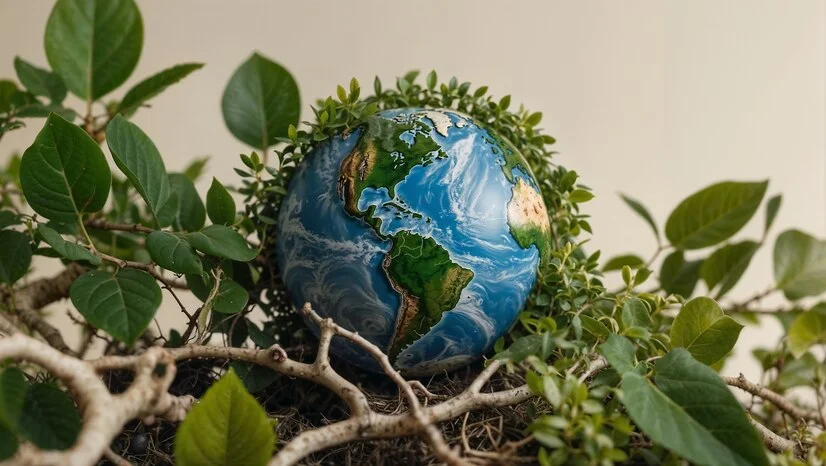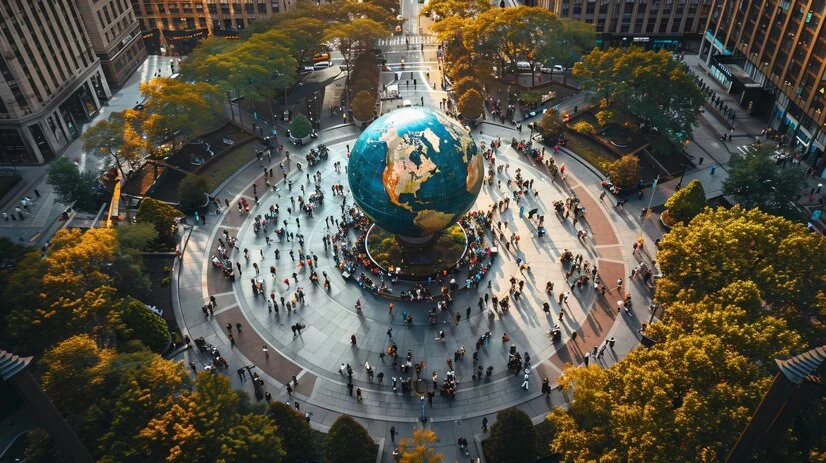Introduction to the Circular Economy
A circular economy is an innovative approach that redefines how we use resources. Unlike the traditional “take-make-dispose” model, a circular economy focuses on minimizing waste by reusing, recycling, and regenerating materials. By embracing a circular economy, countries can reduce their environmental footprint and promote a more sustainable future. South Korea and Singapore are two leading nations in Asia that have taken impressive strides toward adopting circular economy practices, setting a benchmark in sustainable consumption.
The Role of Circular Economy in Sustainable Consumption
Sustainable consumption is crucial in addressing the global environmental crisis, especially with the growing threats of climate change and pollution. A circular economy supports sustainable consumption by extending the lifecycle of materials, reducing waste, and optimizing resources. This approach not only lessens environmental harm but also fosters economic resilience by creating new jobs and industries. For South Korea and Singapore, circular economy practices have become essential for sustainable development, pushing them to lead by example in Asia.
South Korea’s Approach to Circular Economy
South Korea has embraced the circular economy through various national initiatives and policies, primarily focusing on waste reduction, recycling, and eco-friendly production. Here are some key areas where South Korea excels:
1. Government Policies and Legislation
The South Korean government has implemented strict regulations to manage waste and promote recycling. One of the most notable is the Extended Producer Responsibility (EPR) program, which requires producers to take responsibility for their products at the end of their lifecycle. This regulation has led to significant improvements in recycling rates and has incentivized companies to design products that are easier to recycle.
2. Waste Management Innovations
South Korea is known for its innovative waste management systems. Through a pay-as-you-go waste disposal system, households pay based on the amount of waste they produce, encouraging citizens to reduce waste and recycle more. This initiative has successfully reduced municipal waste and increased recycling rates, helping South Korea achieve a recycling rate of over 85% for household waste.
3. Eco-Friendly Production
South Korean industries are increasingly adopting eco-friendly production methods. For instance, the green manufacturing sector has grown, with companies focusing on renewable materials and efficient resource use. The government has also incentivized green investments, promoting technologies that reduce carbon emissions and waste.
Singapore’s Commitment to Circular Economy
Singapore is another leader in the circular economy, with a unique focus on resource optimization and waste minimization. The country’s “zero waste” ambition has driven initiatives across various sectors, aiming for a circular economy by 2030.
1. Zero Waste Masterplan
Singapore’s Zero Waste Masterplan is a comprehensive policy that outlines the country’s goals to reduce landfill waste by 30% and increase recycling efforts. It includes detailed strategies for managing food waste, electronic waste, and packaging. Singapore aims to reduce its reliance on incineration and extend the lifespan of its only landfill, Pulau Semakau, through innovative waste solutions.
2. Water and Resource Recycling
Given its limited natural resources, Singapore has invested heavily in recycling programs, particularly in water management. NEWater, Singapore’s initiative to recycle wastewater, has become a global model. It allows the city-state to meet up to 40% of its water needs through high-quality recycled water, reducing dependence on imported water and conserving resources.
3. Public Engagement and Education
Singapore emphasizes public education as a part of its circular economy strategy. Through initiatives like Eco Action Day, citizens are encouraged to adopt sustainable practices in their daily lives. Schools, businesses, and communities participate in sustainability activities, creating a collective effort toward waste reduction and resource conservation.
Comparative Analysis: South Korea vs. Singapore in Circular Economy Practices
While South Korea and Singapore share a common goal, each country has a unique approach to implementing the circular economy. The table below compares key aspects of their strategies:
| Aspect | South Korea | Singapore |
| Waste Management | Pay-as-you-go system, high recycling rates | Zero Waste Masterplan, focus on reduction |
| Water Recycling | Limited due to natural resources | Extensive, with 40% from NEWater |
| Public Involvement | Incentivized recycling, government-led | Education-focused, community-driven |
| Producer Responsibility | Extended Producer Responsibility (EPR) | Mandatory electronic waste recycling |
South Korea’s strategy is highly regulatory and producer-focused, whereas Singapore emphasizes resource conservation and public education. Both countries offer valuable lessons for other nations seeking to adopt circular economy practices.
Challenges and Opportunities in Implementing Circular Economy Models
Challenges
- High Initial Costs: Setting up recycling facilities and implementing waste management systems require substantial initial investments, which can be a barrier.
- Public Awareness and Compliance: Although both countries encourage sustainable practices, public participation and compliance levels can vary.
- Resource Limitations: Singapore faces natural resource constraints, while South Korea deals with limited land availability for waste disposal.
Opportunities
- Technological Innovation: Emerging technologies, like AI and IoT, can enhance waste sorting and recycling efficiency.
- Job Creation: Circular economy models open new avenues for green jobs in recycling, green manufacturing, and waste management.
- Regional Collaboration: South Korea and Singapore could collaborate on joint initiatives, sharing technology and strategies to achieve sustainable development goals.
The Future of Circular Economy in Asia
The successes of South Korea and Singapore in adopting circular economy models highlight the potential for growth in sustainable consumption across Asia. By embracing innovative technologies, fostering cross-border collaborations, and raising public awareness, the region can lead the way toward a more sustainable future. As South Korea and Singapore continue to progress, other Asian nations may follow suit, scaling circular economy efforts and creating a lasting impact on the environment.
FAQs
- What is a circular economy?
A circular economy is an economic model that focuses on reducing waste and maximizing resource efficiency. It promotes reusing, recycling, and regenerating materials to minimize environmental impact. - How does a circular economy benefit the environment?
The circular economy helps reduce pollution, conserves natural resources, and minimizes the amount of waste sent to landfills. It also decreases carbon emissions, contributing to climate change mitigation. - What are the main strategies used by South Korea in the circular economy?
South Korea focuses on government policies like the Extended Producer Responsibility (EPR) program, innovative waste management systems, and eco-friendly production practices. - How is Singapore implementing a circular economy?
Singapore has a comprehensive Zero Waste Masterplan that includes waste reduction, recycling initiatives like NEWater, and public engagement campaigns to encourage sustainable practices. - Why are South Korea and Singapore leaders in circular economy practices in Asia?
Both countries have developed robust policies and initiatives focused on sustainability, making them models for other nations in Asia. They prioritize innovation, government support, and public participation to drive their circular economy goals. - What are the challenges in implementing a circular economy?
The main challenges include high initial setup costs, public compliance, and resource limitations, which can vary by country and region. - What is Singapore’s Zero Waste Masterplan?
The Zero Waste Masterplan is Singapore’s national strategy to reduce landfill waste, improve recycling rates, and promote sustainable practices. It aims to extend the lifespan of the Pulau Semakau landfill and conserve resources.


